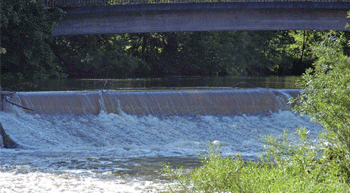
Improved competitiveness by reducing energy
Energy costs are one of the most important cost factors in textile production. Apart from cutting-edge machinery, a professional energy management system with integrated monitoring can achieve considerable savings.
Energy costs are one of the most important cost factors in textile production. Apart from cutting-edge machinery, a professional energy management system with integrated monitoring can achieve considerable savings.
The textile industry in general and the finishing sector in particular, uses significant amounts of energy to run manufacturing. Energy costs are one of the major direct cost factors in textiles, depending on the region, they record about the same amount as labour costs. The energy is mostly delivered as fuels, coal, natural gas, water and electricity, consumed as heat and mechanical power.
Most important direct energy flows vary for different production steps; for spinning and weaving mills most costs are electricity related, but for finishing mills the highest costs relate to fuels needed to generate steam, washing and drying of the fabric.
Reducing energy consumption
Reducing energy consumption will therefore make a significant impact in direct product costs, and this has to be clearly and comprehensively communicated to the entire workforce. With know-how and perseverance, experienced personnel are managing the entire production process with effectiveness. However, to back-up the task of cost reduction, if often helps to get assistance from outside. Specialists with a clear and defined methodology can foster the internal know-how and avoid organisational blindness built-up over the years.
Steam is an important cost factor in the textile finishing processes. Most observed reason for overconsumption is low efficiency. Advanced boilers can operate at higher temperatures while burning less fuel.
Combined with steam production, high condensate return efficiencies are a prerequisite for modern textile finishing. The typical textile factory can reduce this energy usage by approx. About 10 per cent by insulating steam and condensate return lines, stopping steam leakages and maintaining steam traps. Another point is the lack of heat regeneration at boilers and [again] the unawareness of these problems. A thorough analysis can give a lot of significant-and surprising-results. An interesting alternative for high water consumption is to check the possibilities for water re-use with closed systems, 2-cycle systems and reversed osmosis, filtration, buffering, cooling etc. A second saving possibility is the re-use of heat in water streams, or for example in the stenter and thermofixation process, as well as the re-use of process heat in the same or another production step.
Targets
In the past, realistic goals for energy saving programmes resulted in average energy savings of 5-15 per cent per factory. In some cases this is not feasible. However, energy savings of at least 10 per cent with a minimum of investments should be targeted. For this ambitious programme a number of facts and figures are needed. The first step in order to start improving energy efficiency is to routinely measure consumption of gas, steam, water and electricity, in total and at equipment levels to create a baseline from which hot spots of resources use can be identified. Metering at key locations inside a mill enables tracking resources and energy consumptions for specific processes and to identify the processes where efforts to improve efficiency should be focused.
Organisation & Action
To achieve these ambitious targets a structured process has to be followed:
1.Collection of data: If an interested party is approaching Gherzi, it will receive a questionnaire to collect basic energy related data. To provide a first class job, among others, here are some points that must be carefully checked and studied (identify hot spots):
Recent gas, fuel, electricity, water and waste water bills for annual energ




